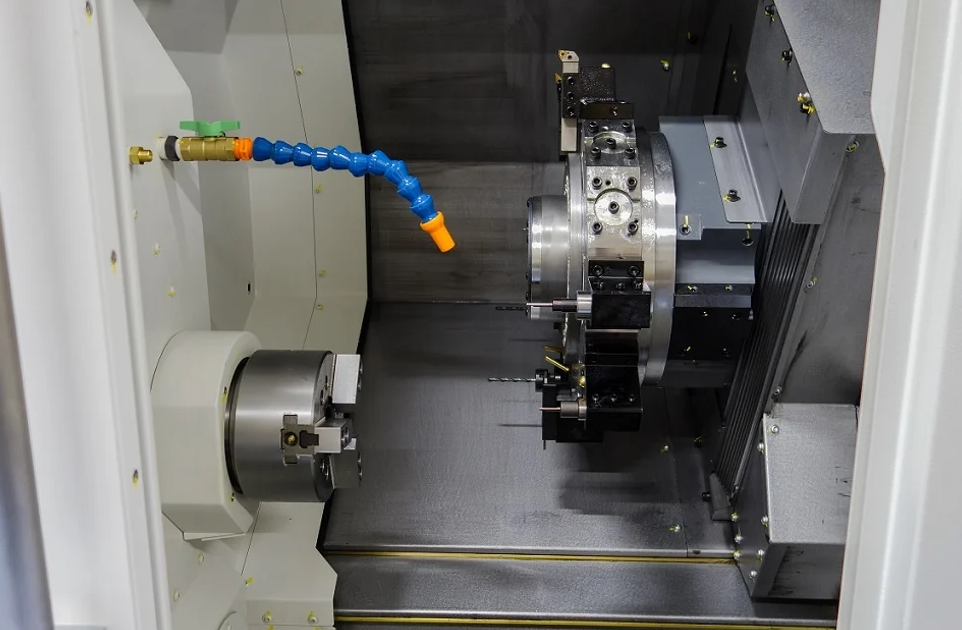Aluminum alloy is the general term of aluminum based alloys. By adding Cu, Si, Mg, Zn, Mn and other alloy elements, it can not only maintain the advantages of pure aluminum, but also greatly improve the “strength” of its alloy. Some kinds can be close to or better than high-quality steel, and become ideal structural materials, which are widely used in machinery manufacturing, transportation machinery, power machinery, aviation industry and other aspects.
Special requirements for metal cutting fluid in aluminum alloy turning
Reasonable use of lubricating fluid can improve turning conditions and achieve twice the result with half the effort. When turning aluminum alloy numerically, special requirements of metal cutting fluid for aluminum alloy turning shall be paid attention to:
The strength and hardness of aluminum alloy are much higher than that of pure aluminum. Compared with steel, aluminum alloy has low strength and hardness, small cutting force and good thermal conductivity. According to the production process, aluminum alloy can be divided into two categories: cast aluminum alloy (or cast aluminum alloy) and deformed aluminum alloy. The plasticity of cast aluminum alloy is low, and the elongation is generally below 4%. It is not suitable for pressure machining, and most of it has good machinability. The deformed aluminum alloy in various states is soft, and its strength and hardness are not high. The difficulty of cutting lies in its high plasticity. When cutting, it is easy to stick to the tool, form chip nodules, and it is difficult to obtain good surface quality. When cutting at high speed, the blade may produce fusion welding, which will make the tool lose its cutting ability and affect the machining accuracy and surface roughness. In addition, the coefficient of thermal expansion of aluminum alloy is large, which is easy to cause thermal deformation of workpiece during cutting and reduce machining accuracy.

Based on the above reasons, the selection of cutting fluid for aluminum alloy processing is very important, which not only ensures good lubricity and rust prevention, but also has very good cooling and filtration. Try to choose special aluminum alloy cutting fluid. Because the special aluminum alloy cutting fluid generally contains special aluminum inhibitors, which can ensure that the workpiece surface will not be damaged during processing. Aluminum alloy cutting fluid can be selected, which has a good anti-oxidation protection effect on the surface of aluminum alloy, excellent lubricity and extreme pressure. It is suitable for various processing processes of aluminum alloy, including turning, milling, drilling, grinding, reaming, blind hole / through-hole tapping, etc.
Requirements for aluminum alloy turning tools
It can be seen from the machinability of aluminum alloy that no matter what kind of cutting processing type in boring, turning and drilling, the tool is required to be wear-resistant, the cutting edge is sharp, and has the design characteristics of large front angle, large rear angle, large main deflection angle, small auxiliary deflection angle, positive edge angle, smooth edge surface and so on.
Rake angle: under the condition of maintaining the strength of the blade, selecting a large rake angle can, on the one hand, grind a sharp edge, on the other hand, reduce cutting deformation, make chip removal smooth, and then reduce the cutting force and cutting temperature. Do not use negative rake tools.
Back angle: the size of the back angle has a direct impact on the wear of the back knife surface and the quality of the machined surface. Cutting thickness is an important condition for selecting back angle. During rough milling, due to large feed rate, heavy cutting load and large calorific value, it is required that the heat dissipation condition of the tool is good, and the back corner should be smaller. During finish milling, the cutting edge is required to be sharp, so as to reduce the friction between the flank and the machined surface and reduce the elastic deformation. The back angle should be larger.
Main deflection angle: properly reducing the main deflection angle can improve the heat dissipation conditions and reduce the average temperature of the processing area.


